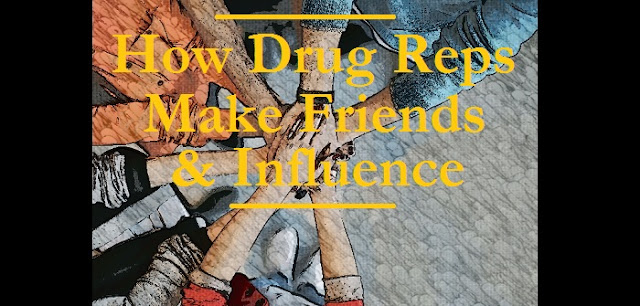
A Day in the Life of a Drug Rep
Let me take you back to my first day as a pharmaceutical sales rep.
I walked into a clinic, hoping my product knowledge and enthusiasm would win over the doctors.
But, as the day went on, I quickly realized it wasn’t just about the products. Building real, human relationships with doctors and staff was the key to success—and that took more than just a sales pitch.
The Importance of Building Relationships in Pharma Sales
Pharmaceutical sales is unique because it’s driven by trust. Doctors aren’t just looking for the latest product—they want a rep they can rely on.
I learned that you need to go beyond just discussing the drug’s benefits. Establishing rapport, being present regularly, and adding value are essential to forging long-term professional relationships.
Here’s the thing:
Doctors see countless reps in a day.
If you want to stand out, you need to connect on a deeper level. Show them that you’re not just there to push your agenda, but to be a resource they can count on. That’s when you stop being “just another rep” and start becoming a trusted partner.
Practical Tips for Building Relationships: From Cold Calls to Trusted Partnerships
1. Show Up Consistently
Consistency is key in building trust.
By being present regularly, I’ve found that it not
only helps create familiarity but also shows your genuine investment in their
success. If you’re interested in deepening your understanding of trust, check
out The Best Ways to Build Trust for more insights.
2. Personalize Every Interaction
Building sales relationships doesn’t stop at just being friendly. Every interaction should feel personalized and meaningful.
To dive deeper into the strategies
that work, explore Building Sales Relationships,
where I share more detailed approaches on fostering connections in sales.
3. Be a Resource, Not Just a Salesperson
Providing value beyond the product is essential in building relationships.
For example,
if you actively listen to their needs, you can offer more targeted solutions.
Active listening is one of the most powerful tools at your disposal, and you
can learn more about it in my post on Sales Tips and Techniques: Listening.
4. Handle Rejection with Grace
There will be times when doctors don’t have time for you, or worse—they simply aren’t interested in your product.
I’ve been in those situations, and what helped was
keeping my cool and respecting their space. It’s all about maintaining a
positive rapport, so when they’re ready, they’ll think of you first.
Personal Anecdote: How I Turned Cold Calls Into Friendships
I’ll never forget one particular clinic where I kept hitting walls.
The doctor was busy, the staff didn’t have time, and I wasn’t making any progress. Instead of giving up, I focused on building relationships with the clinic staff. I remembered their birthdays, brought in coffee, and slowly became a friendly face they trusted.
Eventually, that same doctor—who never had time for me—became one of my most loyal clients. All because I focused on building trust with the entire team, not just pitching the product.
Build Real, Lasting Connections
At the end of the day, pharmaceutical sales is more about people than it is about products. By showing up consistently, being genuinely interested in the doctors you work with, and adding value beyond the sales pitch, you’ll build relationships that last.
It’s these connections that turn short-term sales into long-term partnerships.
If you’re looking for more tips on building successful sales relationships, check out this article on building relationships for successful selling.
PS. When building relationships with key opinion leaders (KOLs), it's crucial to navigate the fine line between friendship and professional influence. In this article, I’ve discuss strategies for maintaining ethical connections with KOLs.
For further insights, dive into this conversation with a KOL to see how these relationships unfold in real time.
Good points to note & use
ReplyDeleteAre you a Medical/Pharmaceutical sales rep yourself?
DeleteThanks for the kind words Rose Lights.
ReplyDelete